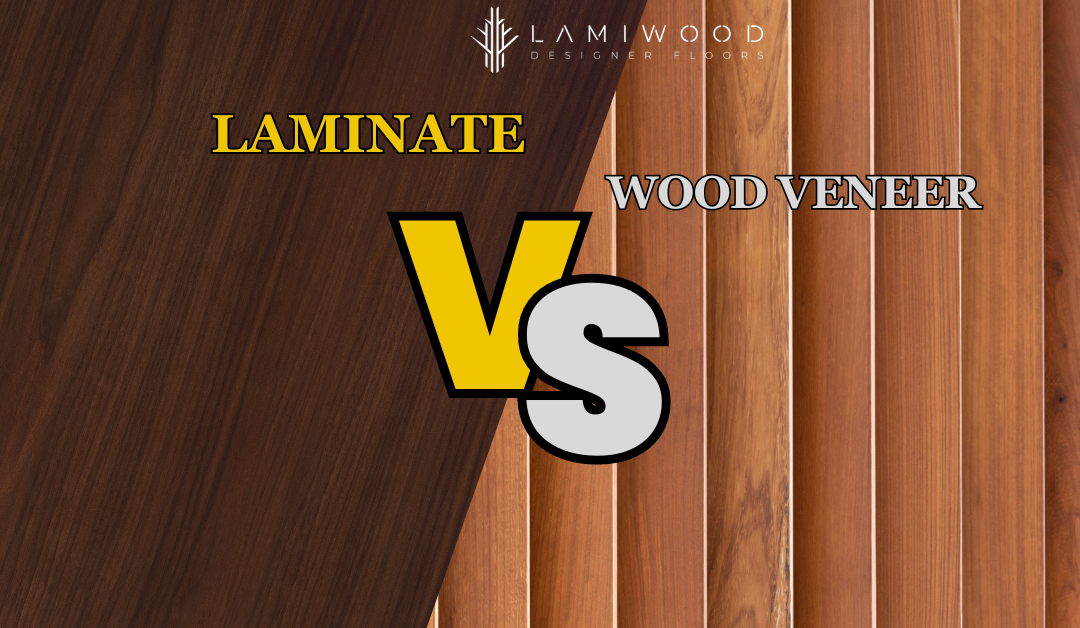Indians love their furniture, isn’t it? But when it’s time to select the flooring for their residential or commercial space, things can get tricky. There are two popular options: laminate and veneer. They might seem similar, but they are different. Let’s break it down to help you decide which one is best for your home.
If you are wondering about the right finish for your furniture, then we are here to provide you with a comprehensive overview and prominent features of both laminate and veneer. In this way, you can make an informed decision and choose the perfect one for your place.
What is Laminate?
Laminate is a man-made material created by stacking several layers of paper and then sealing them with a plastic-like coating. The top layer is designed with a decorative pattern or color to imitate the appearance of real wood, stone, or other materials. Laminate is widely used for flooring because it’s tough, affordable, and can provide the look of more expensive materials.
Advantages of Laminate
Affordability: Laminate is a great choice if you’re on a budget. It’s way cheaper than other options, making it a go-to for projects that need to watch the wallet.
Easy to Keep Up: Taking care of laminate flooring is a breeze. It can handle scratches, stains, and moisture without a fuss, making it perfect for busy areas or projects that need something tough. Plus, you don’t have to bother with regular sealing or treatments, saving you time and hassle.
Lots of Options: Laminate comes in tons of colors and patterns. Some can even trick the eye into thinking it’s real wood. This means you have plenty of choices to get the design you want without spending a ton of money.
What is Wood Veneer?
Wood veneer is like really thin slices of wood, usually less than 3mm thick. They get glued onto core panels, kind of like plywood or medium-density fibreboard. People love veneer because it brings a touch of class with its authentic, rich grain patterns.
Veneer comes in all sorts of grains, types of wood, quality levels, thicknesses, textures, tones, and colors. The options are almost endless! Using a veneer is a great way for people to make a stylish statement in their space.
Advantages of Wood Veneer
Real Wood Feel: The cool thing about wood veneer is that it’s the real deal – made from actual wood. This gives it a natural and fancy appearance, unlike laminate which is a man-made material.
Tough Stuff: Wood veneer is super durable, especially if you take good care of it. It can stick around for a long time, often lasting longer than laminate in similar conditions.
Make it Your Own: Wood veneer can be stained or painted in any color you want, making it a versatile option for all kinds of projects. You get to customize it to match your style.
Points of Differences Between Laminate and Veneer
Laminate vs Veneer #1: MATERIAL COMPOSITION
Laminate: Comes in various types like Matte-finish, Textured, Glossy, Metallic, and more. Textures can mimic wood or stone, offering a range of choices based on personal preference.
Veneer: Classified into Natural wood and Composite, pre-finished, and more. Veneer, being a natural material, has limited shades compared to laminate, offering a more restrained color palette.
Laminate vs Veneer #2: MAINTENANCE
Laminate: Super low maintenance – no need for regular polishing or refinishing. Ideal for Indian home furniture.
Veneer: Easy to spruce up! You can paint or stain veneer flooring as you like. Just remember, it needs a bit more attention – regular polishing is key to keeping that stylish look.
Laminate vs Veneer #3: STRENGTH AND LONGEVITY
Laminate: Tough and long-lasting, but not as sturdy as solid wood. The big plus is it’s resistant to stains and scratches.
Veneer: Looks consistent with existing flooring but scratches more easily than laminate and solid wood. Needs high maintenance for upkeep.
Laminate vs Veneer #4: COST
Laminate: Wallet-friendly, typically a quarter of the cost of solid wood and veneer. It’s a smart choice for good quality furniture at a moderate price.
Veneer: A bit pricier than laminate but more affordable than solid wood. The cost of veneer varies based on the quality of the wooden flooring used.
Laminate vs Veneer #5: USAGE
Laminate: Best for any space in your room, provided you take excellent care of it.
Veneer: Ideal for flooring where you want standout pieces with an extraordinary look and aesthetic appeal.
Also, Read : Wooden Flooring Texture
Settling the Debate: Laminates vs Veneer
Choosing between laminate and veneer flooring for your space involves weighing their pros and cons. Your decision should align with your needs, priorities, and budget. Consider seeking advice from the best flooring experts and checking out the products firsthand.
If you’re still unsure about the right finish for your home, why not let us help?

